I need to annotate a pylab rectangle with few data lines - which are of different length. Searching through the matplotlib documentation, and Googling, I could not find a way to give different parts of an annotation different sizes.
The following snippet demonstrates the problem:
import pylab
from matplotlib.patches import Rectangle
pylab.rcParams['verbose.level'] = 'debug-annoying'
def draw_rectangle(lower, upper, entry):
ax = pylab.subplot(111)
r = Rectangle( lower, upper[0]-lower[0], upper[1] - lower[1],
edgecolor='k')
ax.add_patch(r)
textRank = str(entry['rank'])
textTeamName = entry['teamName']
textSubmissionDate = entry['submissionDate']
text = textRank + "\n" + textTeamName + "\n" + textSubmissionDate
ax.add_artist(r)
rx, ry = r.get_xy()
cx = rx + r.get_width()/2.0
cy = ry + r.get_height()/2.0
ax.annotate(text, (cx, cy), color='w', weight='bold', ha='center', va='center', size=14)
if __name__ == '__main__':
entry = {'rank': 22, 'submissionDate': '12/21/2012 4:58:45 AM', 'teamName': 'A very very very very very very very very very very long name'}
lower = [0,0]
upper = [1,1]
draw_rectangle(lower, upper, entry)
pylab.show()
E.g., is there a way to have the annotation where the font size of 'teamName' is different than the font size of 'rank'?
Another problem is I could not find a way for the font size to correlate to the zooming:
I'm creating a treemap plot, namely, the pylab window is filled with different sized rectangles. If I want to create annotations for the different rectangles, the long data need to be of very small size (to stay within the respective rectangles' boundaries). However, I'd like the font size of the long data line to grow as I zoom in.



